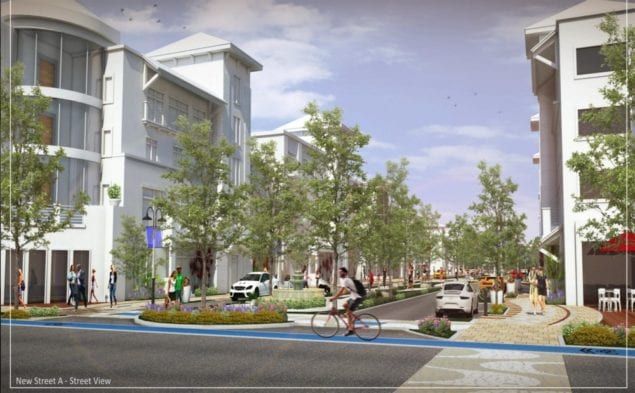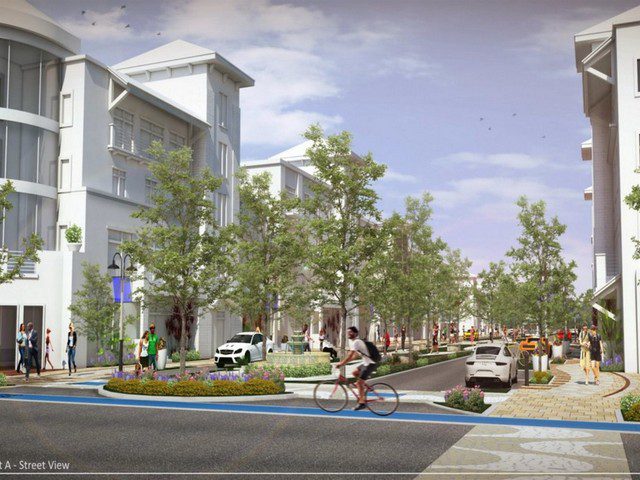
Executives of Dover Kohl & Partners and Marcela Camblor & Associates Inc. gave a presentation on Downtown Urban Village Code Regulations for Palmetto Bay residents and the village council during a Committee of The Whole workshop in Village Hall Chambers on Wednesday, July 19.
In a meeting that lasted two hours, the two consulting firms used a PowerPoint talk to recap the history of planned growth decisions in the “downtown” area and to address concerns about how development might impact the neighborhood and transportation.
Mentioned was the 2004 charrette that, through citizen input, helped create the Franjo Triangle and Island (FT&I) District plan that was adopted in 2006 and how “implementation of the vision did not occur as originally anticipated.” Next, in 2013, the village assembled the Downtown Redevelopment Task Force (DRTF), a team of local residents and professionals. Their work led to the creation of the Downtown Urban Village (DUV) land development regulations, adopted on January 2016.
This triggered development interest but raised concerns as some development proposals seemed a departure from the scale and character of the original citizens’ vision. The village council established a moratorium and hired a team of consultants (Dover Kohl & Partners and Marcela Camblor & Associates) to assess the DUV, consider community concerns and recommend ways to improve implementation of the downtown.
The presentation tackled the folowing concerns and tried to answer them:
• Eight stories are necessary to get appropriate density to support transit/accommodate reserve units. False. While additional stories should allow for higher densities, it is possible to achieve transit-supportive densities with low to moderate height.
• Higher-density housing is only for lower-income households. False.
• Density is good for shops and businesses. True. Mix supports retail, draws more customers, supports longer business hours, increases rents and price per square foot, both for residential and commercial units.
• We need to find a compromise. True. Amending the DUV does not mean you can ignore as-of-right entitlements. Amending the DUV does not entail starting over with a “clean slate.”
Councilmember (Seat 1) Karyn Cunningham seemed pleased with the report.
“The presentation made by Dover and Camblor highlighted many improvements to our current DUV code,” Cunningham said. “I think it addressed many of the concerns I have heard from residents in the last many months including defining incentives, removing bonus floors, lowering density and requiring commercial uses such as retail and restaurants. I look forward to seeing these new code modifications as part of any future proposals in our DUV.”
Councilmember (Seat 2) David Singer praised the work of the firms and asked if they could be hired to make the changes to the regulations.
Residents attending the presentation came to the lectern to comment about the DUV.
John Waters said he had spent an hour speaking with the planner for Miami-Dade County and learned something startling.
“Out of 2,000 new residents there would only be 60 residents, if exaggerated, maybe 120, who would use public transit, so roughly 1,800 would still be using their cars. We should not focus on bringing density to the Franjo area for transit reasons.”
John Taylor asked what was the objective of the study and was told it was to improve the DUV.
“It seems to be there needs to be a structure of the DUV as to how much retail and residential there will be, how much land you have,” Taylor said. “There needs to be a focus.”
Orestes Mayo said, “I don’t want to see canyons of eight-story buildings; I want to see a mix of three- and four- and five-story buildings.”






